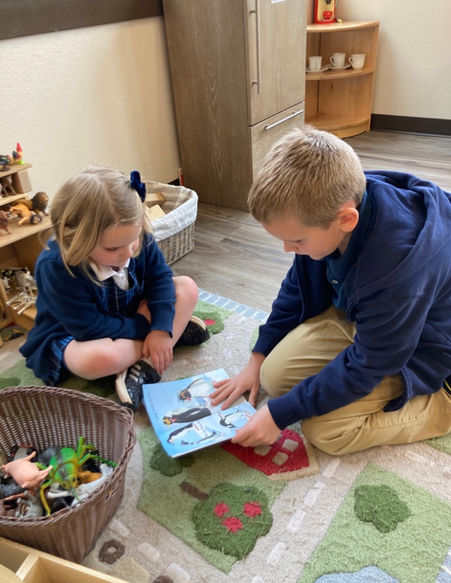
Multi-Age Classrooms
EMPHASIS IS ON THE CHILD RATHER THAN THE CURRICULUM
Children are unique individuals. Teachers focus on teaching each child according to their own strengths. Students learn at their own pace, rather than being taught skills that they are not ready for, or that they have already mastered. The focus then becomes the child's learning rather than the adult's teaching. In multi-age classrooms, children are invited to take charge of their learning and are given more opportunities to choose what they'll work on. This sense of "ownership" and self-direction is the foundation for life-long learning.
STUDENTS BENEFIT FROM PEER LEARNING
Children often learn best from one another. Younger children watch the older ones enjoy advanced, challenging work and this inspires them. They look to the older children for guidance, and the older children have the opportunity to serve as mentors and take on leadership roles. Leading, whether by modeling classroom procedures or helping a younger student add numbers, is a critical experience for a child. Integrating this leadership mindset into the classroom shifts teaching strategies.
CHILDREN TEND TO HAVE A POSITIVE OUTLOOK TOWARD THEMSELVES AND SCHOOL
Research has shown that students in multi-age classrooms were found to have higher self-esteem, more positive self-concepts, less anti-social behavior and better attitudes toward school that their peers in single-grade classes. When children observe different learning levels around them, they naturally develop a "growth mindset." Having the belief that you are in control of your own ability, and can learn and improve, is an important key to success.


.png)





